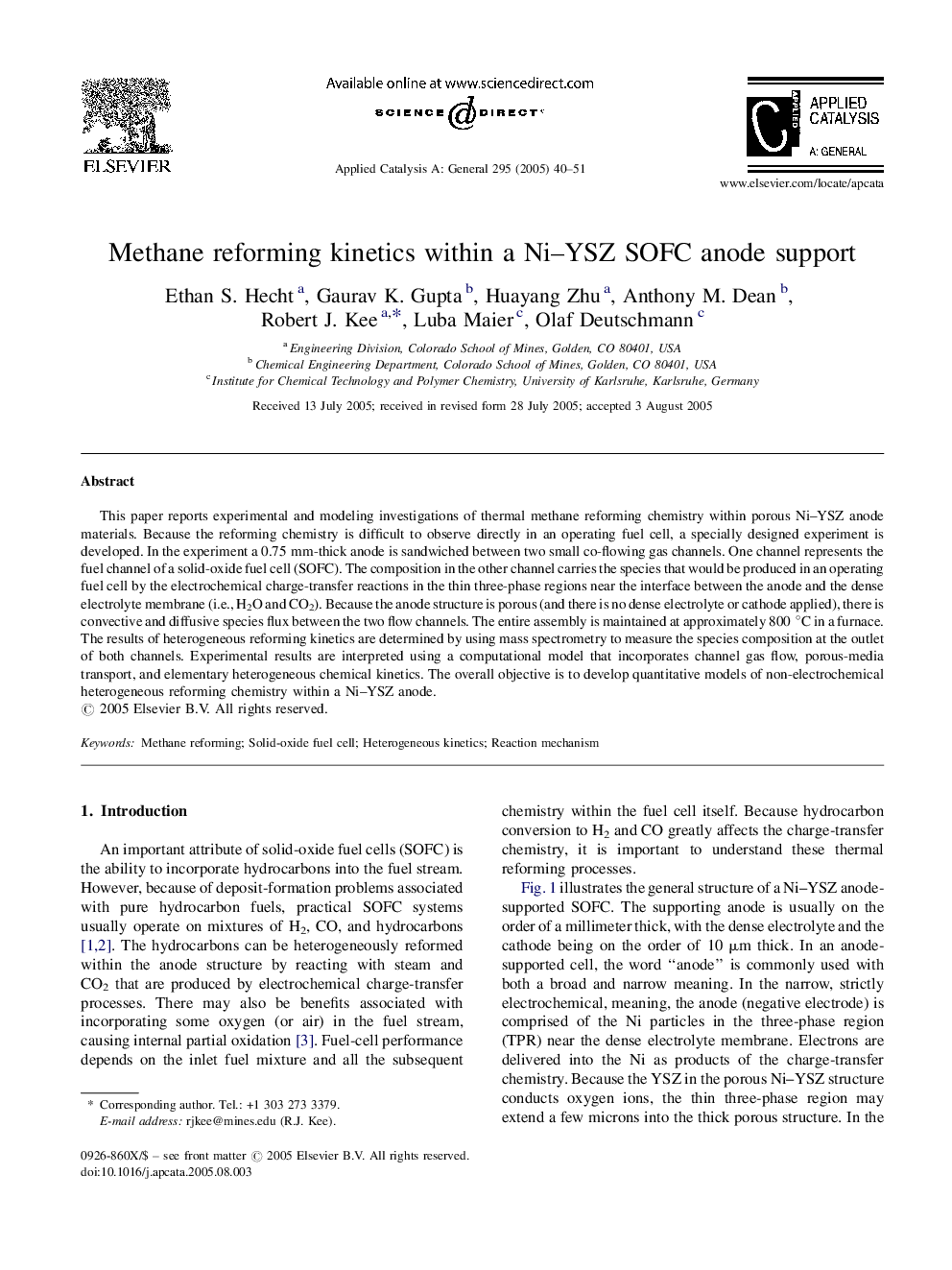| Article ID | Journal | Published Year | Pages | File Type |
|---|---|---|---|---|
| 10238952 | Applied Catalysis A: General | 2005 | 12 Pages |
Abstract
This paper reports experimental and modeling investigations of thermal methane reforming chemistry within porous Ni-YSZ anode materials. Because the reforming chemistry is difficult to observe directly in an operating fuel cell, a specially designed experiment is developed. In the experiment a 0.75âmm-thick anode is sandwiched between two small co-flowing gas channels. One channel represents the fuel channel of a solid-oxide fuel cell (SOFC). The composition in the other channel carries the species that would be produced in an operating fuel cell by the electrochemical charge-transfer reactions in the thin three-phase regions near the interface between the anode and the dense electrolyte membrane (i.e., H2O and CO2). Because the anode structure is porous (and there is no dense electrolyte or cathode applied), there is convective and diffusive species flux between the two flow channels. The entire assembly is maintained at approximately 800â°C in a furnace. The results of heterogeneous reforming kinetics are determined by using mass spectrometry to measure the species composition at the outlet of both channels. Experimental results are interpreted using a computational model that incorporates channel gas flow, porous-media transport, and elementary heterogeneous chemical kinetics. The overall objective is to develop quantitative models of non-electrochemical heterogeneous reforming chemistry within a Ni-YSZ anode.
Related Topics
Physical Sciences and Engineering
Chemical Engineering
Catalysis
Authors
Ethan S. Hecht, Gaurav K. Gupta, Huayang Zhu, Anthony M. Dean, Robert J. Kee, Luba Maier, Olaf Deutschmann,
